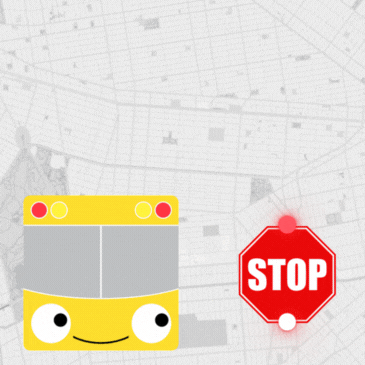
Weekly Dvar Torah: One Step Backward for Two Steps Forward – The Double Comfort and the Full Moon of the 15th of Av
Rabon Shimon ben Gamliel taught in the Talmud: “There were no days as joyous for the Jewish people as the Fifteenth of Av and Yom Kippur.” One can understand why Yom Kippur is joyous—on that day, G-d forgives us and lifts us up. But Tu B’Av? It’s a regular weekday with no special Mitzvos, no special rituals. How can it be compared to Yom Kippur?
The key lies not in what we do on Tu B’Av, but in what the day represents. Tu B’Av is the day in the month of Av that the moon is full, and even though every month has a full moon, what makes this one different is that it follows the darkest day in our calendar—Tisha B’Av, the Ninth of Av, the day of destruction and mourning. The full moon on the 15th is a powerful reminder: just like the moon, the Jewish people always rise again.
Kabbalah teaches that creation itself is built on a pattern: descent in order to ascend. The full moon of Tu B’Av, coming after the complete darkness of Tisha B’Av, is an expression of this principle. Sometimes you have to step back in order to move forward. This isn’t a metaphor—it’s the spiritual core of our people’s journey.
This message came to life in the story of my friend Steve, a top executive at Bear Stearns in 1987. On Black Monday, he lost everything. Financially and emotionally, he was devastated. Looking for clarity, Steve went to the Rebbe for a blessing. When he reached the front of the line, all he could say was, “Rebbe, I need a blessing for Parnasa.”
The Rebbe looked at him and said, “One step backwards for two steps forward.”
Those words lit a spark in Steve. The next day, while others were paralyzed by fear, Steve said, “Buy!” His colleagues thought he was crazy, but he followed the Rebbe’s insight. Slowly at first, then quickly, he rebuilt—not just his career, but his confidence and life.
This is more than a story about one man. It’s the story of our nation. Tisha B’Av marks the deepest descent—destruction, exile, darkness. But Tu B’Av carries G-d’s message: “You are not forgotten. Your return has already begun.”
This year, Tu B’Av falls on Shabbos Nachamu—the Sabbath of Consolation—when we read: “Nachamu, nachamu ami—Be comforted, be comforted, My people.” A double comfort for a double pain: two Temples destroyed, a long exile endured. But also, a double healing to come.
Why is the comfort doubled? The Midrash explains that our suffering was twofold—both physical and spiritual, personal and national. So, the comfort must also be twofold—not just a return to the past, but a leap to something greater.
Chassidus teaches that the Jewish people are like the moon. The nations of the world are like the sun—steady, constant. But the Jewish people are like the moon, we wax and wane. We don’t shine with our own light, rather we reflect G-d’s. Our low points prepare us for higher ones. Our darkest nights come before our brightest revelations.
That’s why the Arizal taught that Kiddush Levana—the blessing over the new moon—should be said on Motzoei Tisha B’Av night. Why then, immediately after the mourning? Because that is when the renewal starts. We declare with confidence: “They (the Jewish people) are destined to renew like her (the moon).”
The Talmud lists several historical reasons why Tu B’Av is special. It was the day the tribes were once again allowed to intermarry amongst each other. The day the dying in the desert ended. In all of these situations a painful chapter was reversed, and renewal began. Girls in white would dance in the vineyards, seeking husbands—not based on money or lineage, but on inner qualities. Tu B’Av became a day of unity and spiritual hope.
Still, Chassidus explains that what makes Tu B’Av so powerful is that it follows Tisha B’Av. That contrast is its strength. Other holidays like Pesach and Sukkos also fall on the 15th of their months, but they do not emerge from such darkness. Tu B’Av teaches us that what follows pain can be greater than anything before.
Even the comfort we read in the Haftorah is repeated: “Nachamu, Nachamu.” The repetition touches something deep. Just as our descent was not just a punishment but a preparation, the comfort is not just a return—it’s a transformation.
The Rebbe Rashab, in his Maamar “Nachamu Nachamu”, explains that G-d’s love during the month of Av is like a father’s love for his child. Even when the child is disciplined, the love remains. In fact, the discipline comes from love and is meant to lead to growth. The tragedies of Tisha B’Av are rooted in hidden kindness. Tu B’Av begins to reveal that kindness again.
We also see this theme in the era of King Solomon. He ruled in the 15th generation after Abraham—a time of peace, holiness, and light. His reign reflected the fullness of the moon and the fullness of the Jewish mission in the world. It’s a glimpse of what will be in the future.
The journey from Tisha B’Av to Tu B’Av is not just historical—it’s personal. Each of us experiences setbacks, darkness, and loss. But just like the moon, we are destined to rise again. And not just to where we were, but to grow beyond. This is the strength of our people.
Tu B’Av is not disconnected from Tisha B’Av—it is its answer. It tells us that we can be broken, but never destroyed. Our light may dim, but it will return stronger. And when it returns, it will brighten the world.
This is the message of Tu B’Av and Shabbos Nachamu: One step back for two steps forward. Destruction is followed by rebuilding. Mourning by joy. Distance by closeness. G-d won’t just comfort us—He will turn pain into joy, exile into redemption.
May we experience that comfort soon. May the full moon shine again for us all. May the Beis Hamikdash be rebuilt, and may we feel G-d’s embrace forever. Amen.
Have a Sprinting of a Shabbos,
Gut Shabbos
Rabbi Yosef Katzman












